Know in Depth
In this section you will be able to learn a little more in depth about the objects that we will see in the astronomical observation of the month. Choose the astronomical object you want:
Cúmulo de Hercules
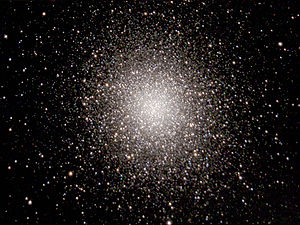
The Hercules Cluster (also known as the Great Cluster of Hercules, Object Messier 13, Messier 13, M13, or NGC 6205 and informally as the Great Cluster) is a globular cluster in the constellation Hercules.
It was discovered by the English astronomer Edmond Halley in 1714 and later added by Charles Messier to his famous catalog of astronomical objects. William Herschel, by means of his large reflecting telescope, was able to discover several alignments of stars (known as spider legs) and finally found that he was in front of a cluster.
Cúmulo Globular de Ofiuco
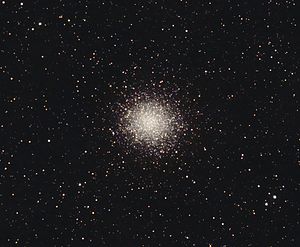
Globular Cluster M14 (also known as Messier Object No. 14 or NGC 6402) is a globular cluster located in the constellation Ophiuchus. It was discovered by Charles Messier in 1764.
It was discovered by William Herschel on February 15, 1786 and it was the first planetary nebula whose spectrum was investigated, this work being carried out by the astronomer William Huggins in 1864.
Nebulosa de Reflexión de Corona Australis
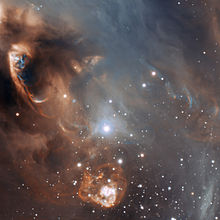
NGC 6729 (also known as Caldwell 68) is a reflection / emission nebula in the constellation Corona Australis. It was discovered by Johann Friedrich Julius Schmidt in 1861. [one]
This fan-shaped nebula opens from the star R Coronae Australis towards the star T CrA to the southeast. R CrA is a pre-main sequence star in the Corona Australis molecular complex, one of the closest star-forming regions of the galaxy at a distance of 130 pc. [one]
Messier 5 is not a popular object for astrophotographers, but it is well known among the visual astronomy community as one of the best groups to observe in the entire night sky.
It was discovered by William Herschel on February 15, 1786 and it was the first planetary nebula whose spectrum was investigated, this work being carried out by the astronomer William Huggins in 1864.
The nebula measures approximately 37.0 ‘x 19.0’ and is approximately 1,500 light years distant from Earth. [2] The proper motion of the central star is believed to date back to the Orion Belt area. [2] The nebula is about 5 light years across.
Galaxia del Girasol
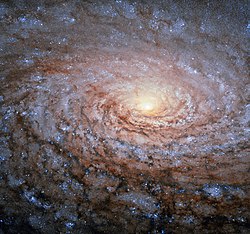
The Sunflower Galaxy (also known as the Spiral Galaxy M63, Object Messier 63, Messier 63, M63, or NGC 5055) is a spiral galaxy in the constellation Canes Venatici. It was discovered by Pierre Méchain in 1779. The Sunflower Galaxy is apparently part of a group with the Whirlpool Galaxy and some small galaxies; Group M51.
How NGC 2841 is an excellent example of a “flocculent spiral galaxy” in which the spiral structure is made up of a multitude of spiral arm segments.
Messier 5 is not a popular object for astrophotographers, but it is well known among the visual astronomy community as one of the best groups to observe in the entire night sky.
It was discovered by William Herschel on February 15, 1786 and it was the first planetary nebula whose spectrum was investigated, this work being carried out by the astronomer William Huggins in 1864.
The nebula measures approximately 37.0 ‘x 19.0’ and is approximately 1,500 light years distant from Earth. [2] The proper motion of the central star is believed to date back to the Orion Belt area. [2] The nebula is about 5 light years across.
Nebulosa de la Mariposa
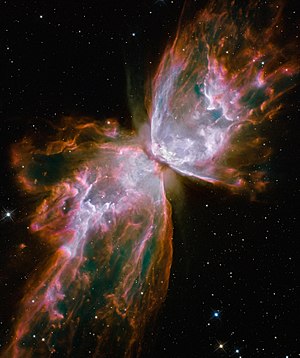
NGC 6302 is a bipolar planetary nebula in the constellation Scorpius, the scorpion, also known as the Insect Nebula or Butterfly Nebula.1 Being included in the New General Catalog, this object has been known at least since 1888. The first known study of NGC 6302 dates from 1907 and was carried out by Edward Emerson Barnard, who drew and described this nebula.
Messier 5 is not a popular object for astrophotographers, but it is well known among the visual astronomy community as one of the best groups to observe in the entire night sky.
It was discovered by William Herschel on February 15, 1786 and it was the first planetary nebula whose spectrum was investigated, this work being carried out by the astronomer William Huggins in 1864.
The nebula measures approximately 37.0 ‘x 19.0’ and is approximately 1,500 light years distant from Earth. [2] The proper motion of the central star is believed to date back to the Orion Belt area. [2] The nebula is about 5 light years across.
GETTING HERE
FAMILIAR
A couple and their children-
Up to 4 children
-
Presentation of the Universe
-
Observations
EXCLUSIVE
Limit 15 people-
A personal or group visit
-
Presentation of the Universe
-
Observations


